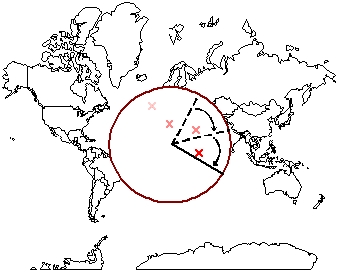

Rogerson (1997) developed a cumulative sum modification of Tango's statistic (Tango 1995) for detecting spatial clustering. Rogerson's Spatial Pattern Surveillance Method detects global, spatial clusters in individual-level data. It is used to monitor changes in spatial pattern for observations processed sequentially. Essentially, it can be used to determine when a disease shows spatial clustering.
The method has been used to look at patterns of Burkitt's lymphoma in Uganda (Rogerson 1997). Rogerson reanalyzed data from a previous study (Williams et al. 1978) of cases from 1961-1975. His analysis confirms that spatial clustering in Burkitt's lymphoma did exist in specific time-intervals.